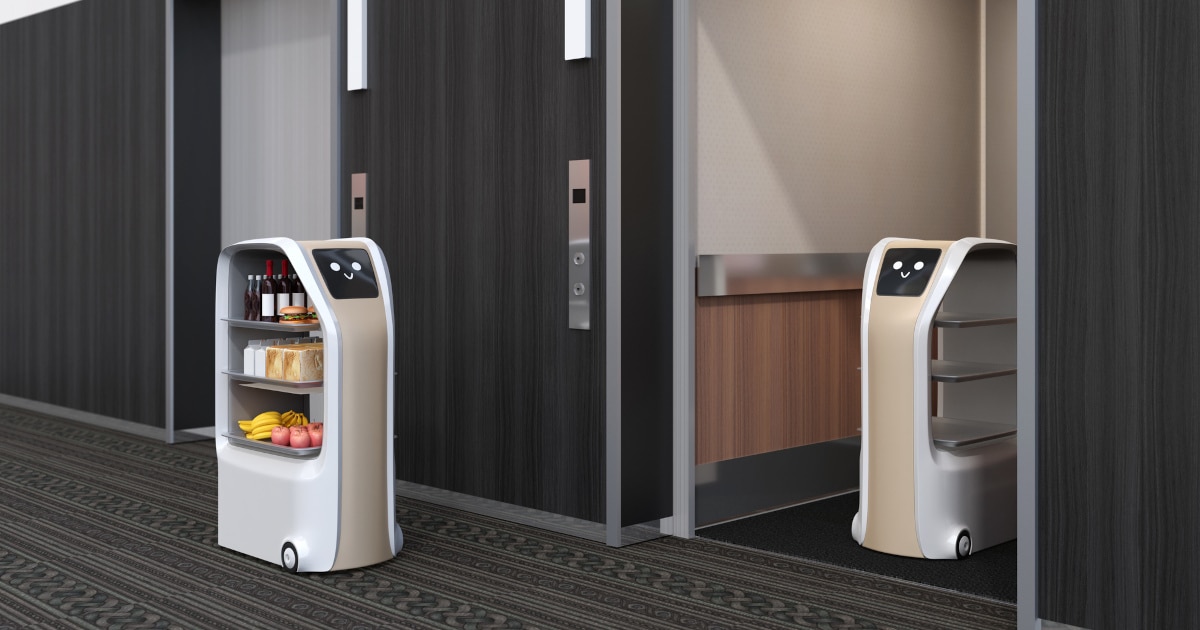
What are Service Robots? Types of Robots and Examples of Use
Service robots have been attracting a great deal of attention in recent years as a solution to various problems such as labor shortages and cost reduction, and many companies may be considering their introduction.
Service robots have a wide range of applications, and there are many different types of robots available.
In this article, we will explain in detail the types of service robots and examples of their use, as well as the subsidy system in Japan for their introduction.
contents[非表示]
- 1.What are Service Robots?
- 1.1.Differences from Industrial Robots
- 1.2.Types of Service Robots
- 1.3.①Indoor Robots
- 1.4.②Outdoor Robots (Field Robots)
- 2.Examples of Service Robots
- 2.1.①Sterilization and Cleaning Robots in Medical Institutions
- 2.2.②Catering Robots in Restaurants
- 2.3.③Autonomous Mobile Robots in Factories and Warehouses
- 2.4.Subsidy Programs for the Introduction of Service Robots in Japan
- 3.Summary
What are Service Robots?
Service Robots are robots that assist in tasks performed by humans.
Due to technological advances and COVID-19, more and more companies are adopting these robots, and it is expected that they will become more and more familiar in the future.
Small motors are essential for service robots to move. In addition to driving the wheels, motors are also used in various parts, such as the arms for work and the camera sensors for checking the surroundings.
Small motors are explained in detail in the following article.
Introduction of Applications and Main Types of Small Motors
Differences from Industrial Robots
Robots can be divided into two main categories: service robots and industrial robots. Industrial robots are used in factories and other manufacturing sites for the purpose of industrial automation.
Service robots are a generic term for robots other than industrial robots, which are used in all situations other than industrial applications.
Types of Service Robots
Service robots can be categorized according to their use as follows.
▼Service Robots Classification Table
Indoor Robots |
|
Outdoor Robots (Field Robots) |
|
There are two main types of service robots: indoor and outdoor. Each is further subdivided and explained in detail below.
①Indoor Robots
Indoor robots include medical robots used to assist in surgery and communication robots used as receptionists in stores.
Indoor robots also include home appliances equipped with artificial intelligence. Robotic vacuum cleaners, refrigerators, and washing machines are increasingly equipped with artificial intelligence.
②Outdoor Robots (Field Robots)
Robots used outdoors are also called field robots, and there are many different types. Typical examples are agricultural robots that support the harvesting of crops and disaster response robots that rescue people in disaster areas.
Perhaps surprisingly, drones are also excellent outdoor robots (field robots). They are used to support tasks such as surveying and transporting objects.
Examples of Service Robots
This section introduces service robots and the specific situations in which they are used, with examples of how they are utilized.
①Sterilization and Cleaning Robots in Medical Institutions
COVID-19 has led to the introduction of robots for sterilization and cleaning in healthcare facilities. The robots can operate remotely or autonomously, reducing the risk of infection to humans and keeping the space clean.
Specifically, they can automatically spray sanitizers and irradiate UV onto floors. Mabuchi Motor offers high-power brushless motors used in UV irradiation robots.
②Catering Robots in Restaurants
It is no longer unusual to see catering robots carrying food in restaurants. Not only do they reduce labor costs and enable non-contact customer service, but they can also be expected to improve sales by increasing the seat turnover rate.
It is expected that the introduction of these robots, especially in family restaurants, will continue to increase in the future.
③Autonomous Mobile Robots in Factories and Warehouses
Autonomous mobile robots such as AGVs and AMRs increase productivity in factories and warehouses. They can move without problems through narrow corridors and steps while loaded with objects.
Mabuchi Motor provides brushless motors that are indispensable for autonomous mobile robots and are used by various manufacturers.
Subsidy Programs for the Introduction of Service Robots in Japan
We recommend that you take advantage of the subsidy programs when introducing service robots.
The Ministry of Economy, Trade and Industry's "Subsidy for Promoting Productivity Improvement in Manufacturing, Commerce, and Services" supports capital investment by small and medium-sized enterprises and small businesses.
In addition, each local government may offer individual subsidies.
Summary
In this article, service robots explained the following.
What are Service Robots?
Types of Service Robots
Examples of Service Robots
Subsidy Programs for the Introduction of Service Robots
Service robots enrich people's lives by assisting them in their work. They are being introduced at medical institutions and restaurants, and are being used in a variety of situations. The right motor for the right application is indispensable to operate service robots.
For example, Mabuchi Motor offers IS series and MS series for autonomous mobile robots, while the IR/MR series is recommended for driving AMRs and other devices that do not require fine control.
Our products are used in many other fields besides service robots. Our representatives will support you in your purchase, so that even first-time buyers can use our products with confidence.
If you are interested in our products, please feel free to contact us.
contact us




